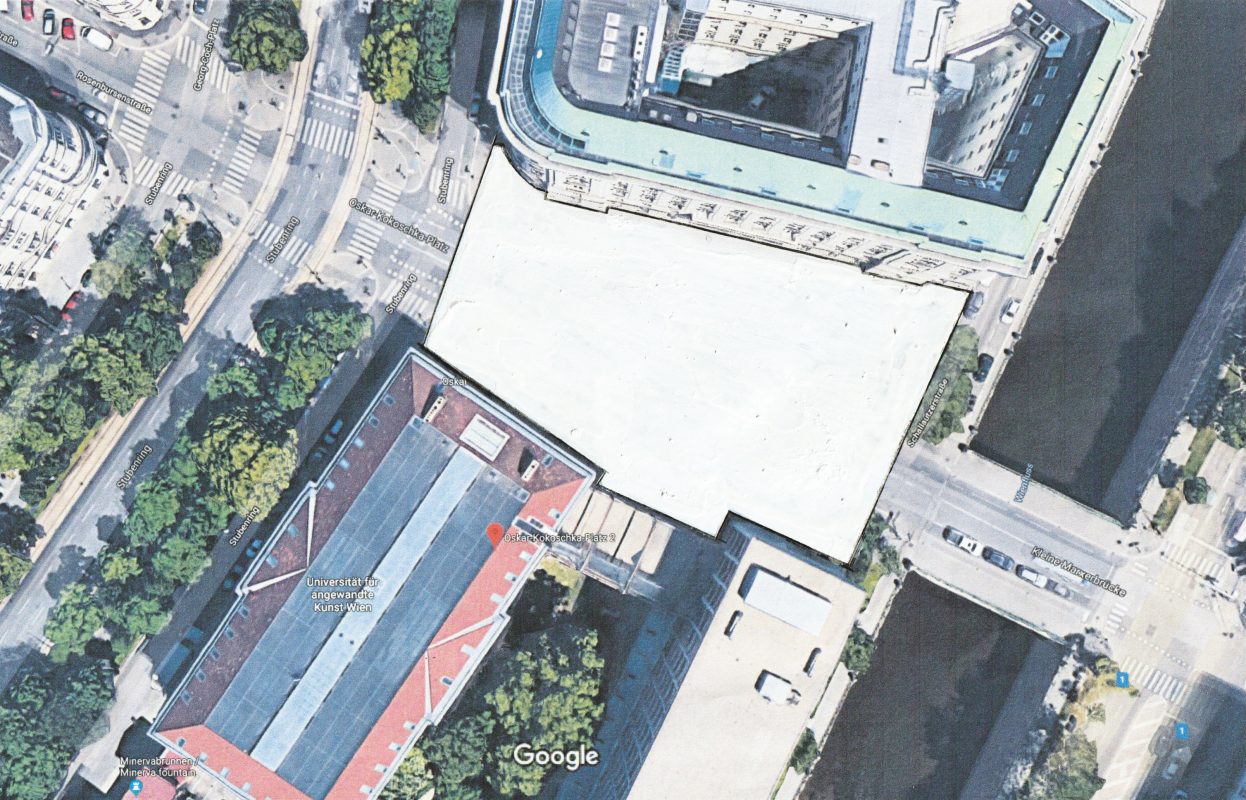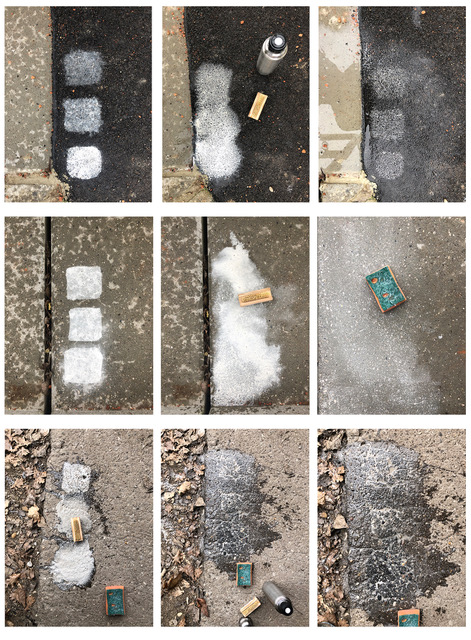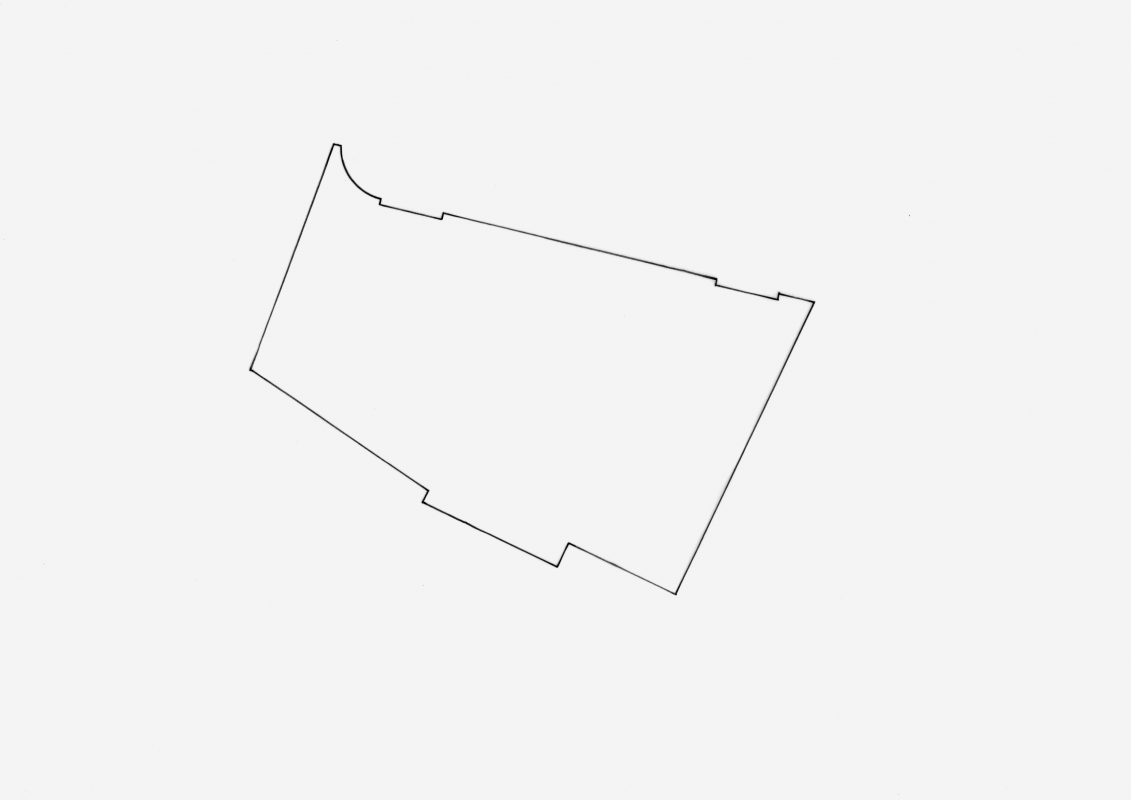From this formula, the American art historian Rosalind Krauss develops the famous diagramme for a “Sculpture in the Expanded Field”. Hans Schabus takes up this idea of the field by colouring the surfaces of Oskar-Kokoschka-Platz—street, pavements, kerbs, green areas—with white paint. The square in front of the University of Applied Arts Vienna, situated in the middle of the city, is not landscape, not architecture; it is now sculpture. The strict juxtaposition of what is built and what is not, of culture and nature, shapes our understanding of space. In the process, we overlook the specific qualities of the spaces in between; the niches, corners, streets and squares, the edges and the borders. We are literally hemmed in by these concepts from which space is generated. Schabus breaks away from this restricting binary of built and unbuilt and opens up a spatial scheme that Krauss calls complex, namely a space as field, as text, a space that suspends the edges in order to develop an idea of an Allmende, a common space. White, the basic colour of art, stands for the beginning, for the moment before the first stroke,as well as for the result, the moment of showing. Schabus formulates white as a question; a question about who we are and where we want to go.
The spatial expansion of the university, resulting from the use of the former customs office at Vordere Zollamtsstraße 7 and Otto Wagner’s former Postsparkasse, creates a new field that opens up possibilities for an understanding of space that is not based on demarcation and exclusion but on participation. Hans Schabus, Oskar-Kokoschka-Platz, 2020/21
Hans Schabus, Keine Landschaft –Keine Architektur – Skulptur, 2021, (c)LenaKohlmayr
Hans Schabus, Keine Landschaft – KeineArchitektur – Skulptur, 2020


